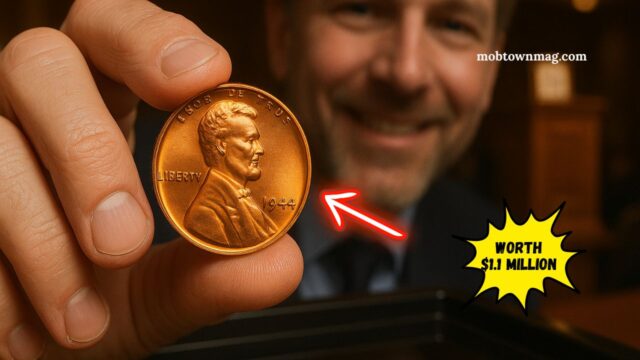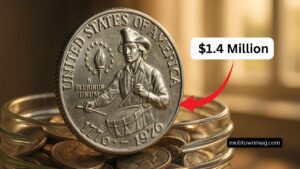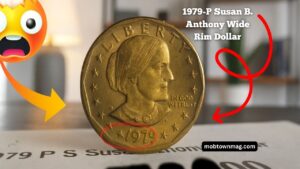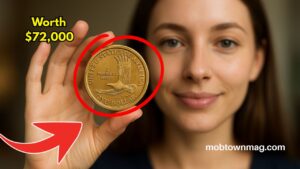In an astonishing numismatic event, a 1944 Wheat Penny shattered previous auction records by fetching $1.1 million. What seems like an everyday coin turned into a priceless treasure—thanks to an extraordinary wartime error.
This article explores the reasons behind this penny’s exceptional value, the rarity of such error coins, and why collectors remain captivated by small pieces of metal with big stories.
The 1944 Wheat Penny: An Unexpected Wartime Blunder
In 1943, the U.S. Mint switched from copper to zinc-coated steel for pennies, conserving copper for vital wartime production. In 1944, the intent was to return to copper pennies—but a few coins were inadvertently struck on leftover steel blanks from 1943.
These 1944 steel Wheat Pennies were never meant to exist, but their creation set them apart as extraordinarily rare minting errors.
The record-setting penny, preserved in near-perfect condition, captivated the coin world and is now one of the most sought-after U.S. cents ever sold.
Why This Coin Reached $1.1 Million
Several key factors combined to drive the price to record levels:
- Extreme Rarity – Only a handful of 1944 steel Wheat Pennies are known to exist.
- Flawless Condition – Graded near-perfect, making it a collector’s ideal.
- Historical Significance – A tangible mishap from World War II’s numismatic history.
- Collector Appeal – Error coins with compelling backstories command immense attention.
Even within a niche market, a combination of rarity and condition can elevate a penny from pocket change to six-figure value—or more.
Quick Facts
| Aspect | Details |
|---|---|
| Coin Year & Type | 1944 Wheat Penny (steel error) |
| Composition | Steel (zinc-coated), mistakenly struck |
| Known Examples | Very few—exact count undisclosed |
| Auction Record Price | $1.1 million |
| Key Value Drivers | Minting error, rarity, flawless grade, historical context |
The Importance of Coin Preservation
That this penny sold for such a staggering sum underscores the importance of condition. Coins maintained in optimal environments—tarnish-free holders, low humidity, minimal handling—can appreciate to extraordinary levels.
For investors and history enthusiasts, careful preservation can turn even routine coins into irreplaceable assets.
Why Collectors Cherish Error Coins
Error coins like the 1944 steel Wheat Penny resonate on several levels:
- They capture historical quirks—the imperfect result of human or mechanical oversight.
- They transform everyday objects into tangible stories from the past.
- They present outstanding investment potential, often surpassing traditional assets in growth.
- They offer both monetary and educational value, captivating hobbyists and historians alike.
This particular penny doesn’t just represent wartime production chaos—it symbolizes how small mistakes can yield historic treasures.
The 1944 Wheat Penny’s $1.1 million auction sale is more than a numismatic headline—it’s a testament to how rarity, history, and preservation converge to create something truly exceptional.
From a simple wartime misprint to a priceless treasure, this coin reminds us that even the tiniest objects can hold monumental stories.
Whether you’re a seasoned collector or a casual enthusiast, it’s a powerful example of how attention to detail can turn pocket change into a legacy.
FAQs
What makes the 1944 Wheat Penny so special?
A rare minting error: it was struck on steel planchets during wartime, when pennies were supposed to be copper—making it one of the rarest Lincoln cents.
How many of these error pennies exist?
Only a tiny handful have been confirmed—just enough to make them extraordinarily rare and highly desirable among collectors.
Why did this particular coin fetch such a high price?
Its combination of rarity, pristine condition, historical significance, and collector demand drove its value to a record-breaking $1.1 million.




